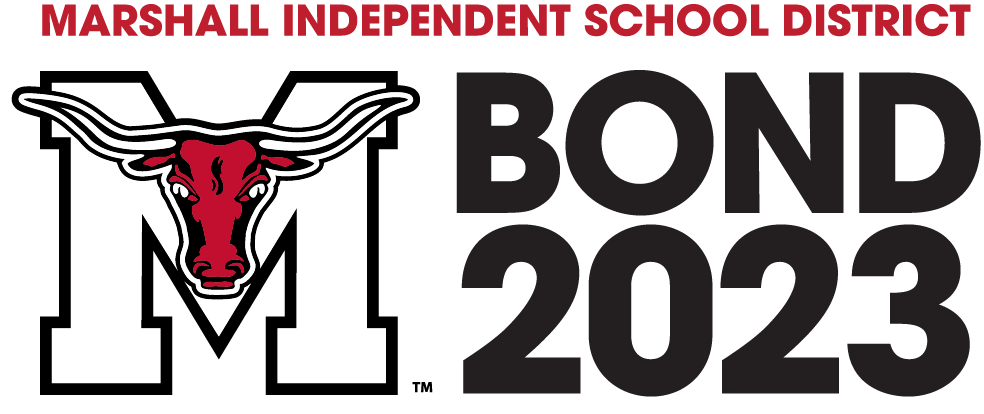FREQUENTLY ASKED QUESTIONS
What is a bond election?
School Districts are required by state law to ask voters for permission to sell bonds to investors in order to raise the capital dollars required to renovate existing buildings or build new schools. Essentially, it’s permission to take out a loan to build, renovate and pay that loan back over an extended period of time, much like a family takes out a mortgage loan for their home. A school board calls a bond election so voters can decide whether or not they want to pay for proposed facility projects.
How does the bond process work?
Following voter approval of a bond referendum, and only then, with approval of the Board of Trustees, bonds are sold to investors at a competitive or negotiated sale.
Bond proceeds are delivered to the school district about five weeks after the bond sale and are invested until spent during the construction process. The district may enter into contracts for the construction of facilities when proceeds are received.
Bond proceeds can be used only for capital improvements and related costs.
Each year, the Board of Trustees sets a tax rate in two parts. The maintenance and operations rate is used to cover operating costs (salaries, supplies, equipment, insurance, utilities, etc.) while the debt service rate pays off the principal and interest due on bonds.
What is the total amount of the bond?
The total amount of the bond is $41,900,000.
When is the election?
Election Day is Saturday, May 6, 2023. Early Voting begins April 24 and ends May 2. The last day to register to vote is April 6, 2023.
How can bond funds be used?
Bond funds can be used to pay for new construction, renovations to existing facilities, land acquisition, and technology infrastructure. Bonds cannot be used for day-to-day operating costs, such as salaries, utility bills, supplies, maintenance, and fuel.
Where can I find exactly what is proposed in the bond package?
Visit the Bond Proposal page to see a breakdown of the proposition.
How did Marshall ISD determine the construction proposed in this bond election?
Marshall ISD has been evaluating current facilities and equipment, and district priorities with the Board of Trustees since the spring of 2022. Working with the Board of Trustees, teachers, and administrators from across the district, the facilities planning committee developed a list of requested items to consider for inclusion in a 2023 bond package.
Why is the district going for another bond after passing one in 2015?
The 2015 Bond proposal only encompassed the building of three new elementary schools, Marshall Junior High School, and the renovation of Sam Houston STEM Academy. No bond funds were used towards Marshall High School. The 2023 Bond would focus on renovations and additions to Marshall High School.
Could maintenance not take care of these as routine maintenance and save money?
In recent years, MISD’s normal operating budget—which pays for things like salaries, utilities, and supplies—has been used to pay for major updates, such as the renovation of the MHS auditorium, the new Ag Barn, security and safety upgrades, and the soon-to-begin renovation of Marshall Early Childhood Center. We reserve a portion of our operating budget for general repairs, as well as unexpected repairs, but funding major projects from the normal operating budget reduces amounts available for other expenses, such as teacher salaries and academic programming.
How will the 2023 Bond package affect my taxes?
This will NOT raise property taxes. Due to state compression of the M&O tax rate, based on current state law the total Marshall ISD tax rate will not increase as a result of the bond election.
What is Marshall ISD's current tax rate?
Marshall ISD's current tax rate is $1.1517, with $0.8618 of that in M&O tax and $0.2899 in I&S tax.
What is the difference between M&O and I&S tax?
Visit the Tax Information page to learn more about M&O and I&S taxes.
Why does the ballot say "This is a property tax increase"?
State law requires this language on all school bond referendums.
Visit the Voting Information page to learn more about what your ballot will look like.
If we approve bond dollars for specific projects, are those dollar amounts allowed to change?
The purposes authorized by the election will not change. The dollar amounts allocated to each particular project may vary.
What is the benefit of combining rather than separating the propositions?
Completing one project out of several does not solve the District’s needs. Thus, one proposition will be on the ballot.
Will Maintenance and Operation costs be lower with warranties and new facilities?
Yes. The District expects substantial savings in maintenance and operations costs per square foot of facility with new and renovated facilities.
What is current enrollment for the entire district?
Entire District: 5,057 (2022-2023) / MHS Enrollment: 1,390 (2022-2023)
How long does the district have to repay the bonds?
The District can choose an amortization schedule for repayment. Typical pay back periods range from 20 to 30 years. The district currently intends to use a 30 year amortization schedule for this proposed bond, although the final amortization will be determined at the time of issuance.
